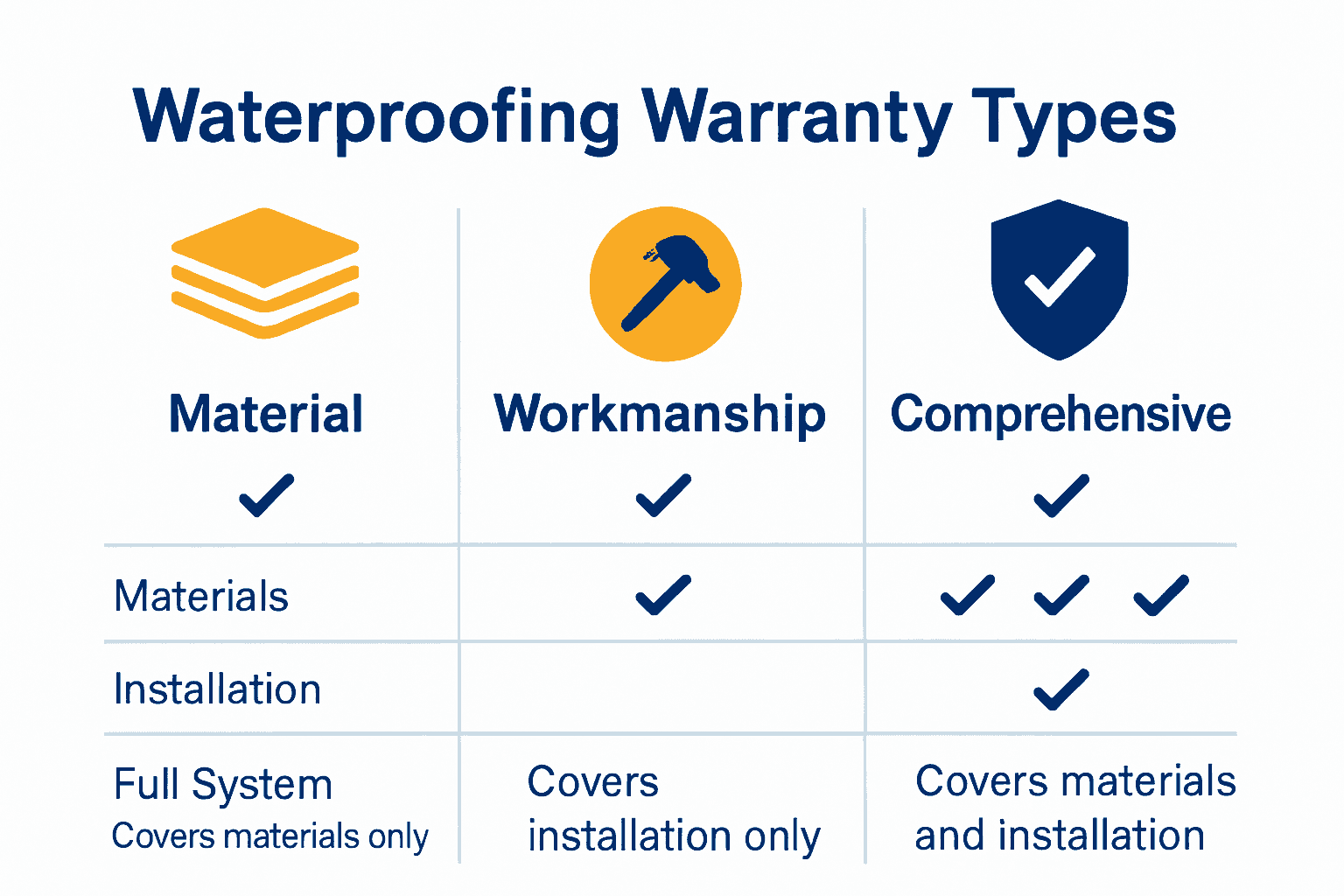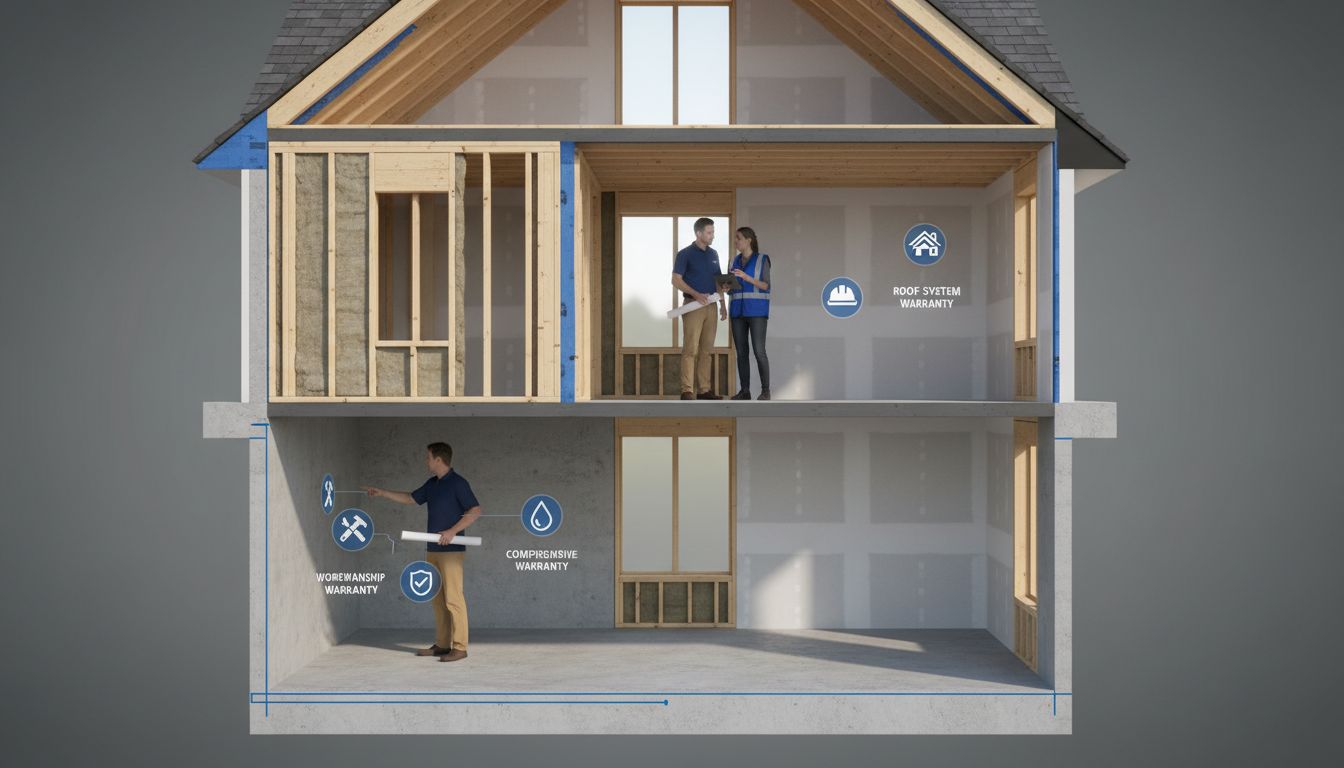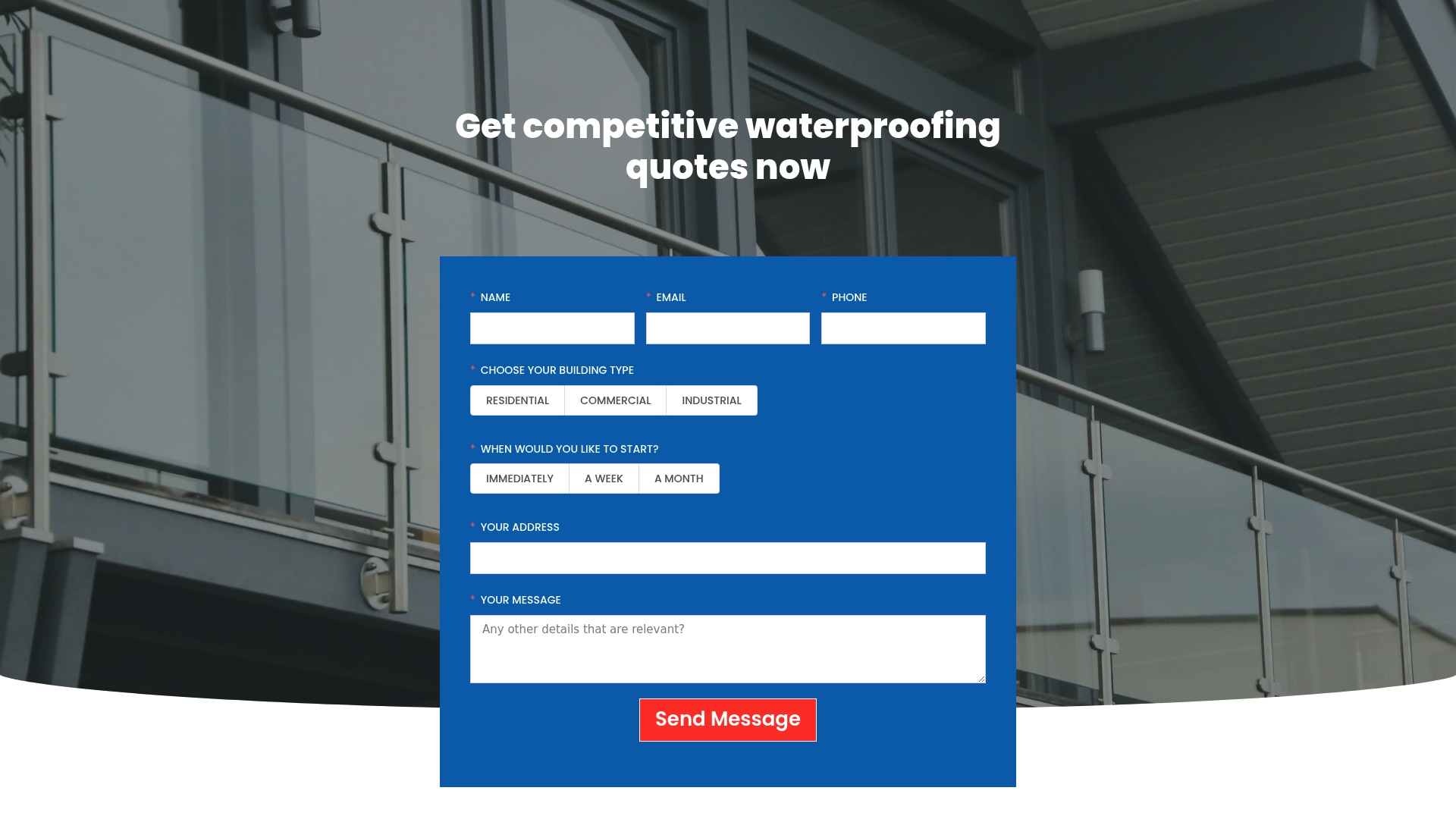Water damage ranks among the most costly threats to property owners, with repairs sometimes exceeding tens of thousands of rand. Choosing the right waterproofing warranty can make all the difference between lasting protection and expensive headaches. Clear knowledge about coverage, exclusions, and warranty terms helps safeguard your investment, whether it’s a new home or a commercial building. This guide breaks down what you need to know and shows you how to avoid common pitfalls before water becomes a problem.
Table of Contents
- Defining Waterproofing Warranties And Coverage
- Types Of Waterproofing Warranties Explained
- Essential Terms And Common Exclusions
- Roles Of Contractors And Property Owners
- Risks, Costs, And How To Claim Effectively
Key Takeaways
| Point | Details |
|---|---|
| Waterproofing Warranties Are Crucial | These warranties assure property owners of the effectiveness and durability of waterproofing solutions against moisture damage. |
| Types of Warranties | Property owners should understand the differences between material, workmanship, and comprehensive warranties to choose appropriate coverage. |
| Review Warranty Terms Carefully | Familiarizing oneself with essential terms, exclusions, and maintenance requirements is vital for ensuring warranty validity and protection. |
| Collaborative Responsibilities | Success in waterproofing projects relies on clear roles for both contractors and property owners, focusing on maintenance and prompt issue reporting. |
Defining Waterproofing Warranties and Coverage
A waterproofing warranty represents a critical contractual agreement between property owners and waterproofing professionals that guarantees the effectiveness and durability of waterproofing solutions. According to sans10400.co.za, these warranties establish comprehensive guidelines for protecting structures against moisture penetration and potential water damage.
Typically, waterproofing warranties cover specific aspects of water protection, including potential defects in materials, installation processes, and performance standards. The scope often encompasses different areas of a property, such as foundations, basements, roofs, and exterior walls. In the context of South African construction standards, SANS 10400 provides detailed frameworks that outline precise expectations for warranty coverage and professional accountability.
Key components of a comprehensive waterproofing warranty generally include:
- Material performance guarantees
- Workmanship quality assurances
- Specified duration of coverage
- Clear definitions of repair or replacement terms
- Exclusions and limitations of warranty protection
Property owners should carefully review warranty documentation to understand the exact terms, duration, and conditions of their waterproofing protection. Understanding the Role of Waterproofing Warranties can help you make informed decisions about protecting your property’s structural integrity and preventing potential water-related damages.
Types of Waterproofing Warranties Explained
Waterproofing warranties come in various forms, each designed to address specific protection needs for different property structures and potential water-related risks. According to SANS 10400, these warranties are categorised based on the complexity of coverage, materials used, and the specific areas of water protection required.
Three primary types of waterproofing warranties dominate the construction and property maintenance landscape:
-
Material Warranty: Covers defects in waterproofing materials and their inherent performance characteristics. This warranty typically guarantees that the selected waterproofing products will maintain their protective properties under standard environmental conditions.
-
Workmanship Warranty: Focuses on the quality of installation and professional application. It ensures that the waterproofing techniques meet industry standards and will effectively prevent water penetration for a specified duration.
-
Comprehensive Warranty: The most extensive protection, combining both material and workmanship guarantees. This type of warranty provides comprehensive coverage against potential water damage, material failures, and installation defects.
When selecting a waterproofing warranty, property owners should consider factors like coverage duration, specific exclusions, and the reputation of the service provider.

Essential Terms and Common Exclusions
Understanding the terminology and exclusions in waterproofing warranties is crucial for property owners seeking comprehensive protection. According to SANS 10400, these warranties contain specific technical definitions and conditions that can significantly impact the scope of coverage and potential claims.
Key essential terms that property owners should familiarise themselves with include:
- Effective Period: The specific duration during which the warranty remains valid
- Active Coverage: Timeframe and conditions under which warranty protections apply
- Material Degradation: Acceptable levels of wear and performance reduction
- Maintenance Requirements: Specific actions property owners must take to maintain warranty validity
Common warranty exclusions often encompass situations beyond the direct control of waterproofing professionals. These typically include:
- Damage resulting from structural movements or foundation settlements
- Water intrusion caused by extreme weather events
- Modifications or repairs performed by unauthorized personnel
- Normal wear and tear exceeding predetermined thresholds
- Pre-existing water damage prior to warranty implementation
Property owners must carefully review these terms and exclusions to understand the precise boundaries of their waterproofing protection.
A to Z of Roof Waterproofing provides additional insights into navigating the complexities of waterproofing warranties and ensuring comprehensive property protection.
Roles of Contractors and Property Owners
The success of a waterproofing warranty hinges on a collaborative relationship between contractors and property owners, with each party holding distinct yet interconnected responsibilities. According to SANS 10400, these roles are carefully defined to ensure comprehensive protection and effective maintenance of waterproofing systems.
Contractor Responsibilities encompass several critical aspects:
- Conducting thorough initial property assessments
- Recommending appropriate waterproofing solutions
- Implementing high-quality installation techniques
- Providing detailed documentation and warranty information
- Offering professional guidance on maintenance requirements
Property Owner Responsibilities are equally important and include:
- Maintaining regular inspection schedules
- Following manufacturer-recommended maintenance protocols
- Documenting and reporting potential water-related issues promptly
- Preserving warranty documentation
- Preventing unauthorized modifications to waterproofed areas
Ultimately, the effectiveness of waterproofing protection depends on mutual understanding and proactive collaboration. Understanding the Role of Contractors in Waterproofing provides additional insights into how professional expertise and property owner diligence combine to safeguard your property against water damage.
Risks, Costs, and How to Claim Effectively
Waterproofing failures can lead to substantial financial and structural risks for property owners. According to SANS 10400, understanding the potential costs and claiming processes is crucial for effective property protection and warranty management.
Potential Risks associated with waterproofing failures include:
- Structural damage to foundations
- Mould and mildew growth
- Decreased property value
- Potential health hazards
- Expensive emergency repairs
- Compromised building integrity
The financial implications of waterproofing failures can be significant. Repair costs can range from modest patch repairs to complete structural reconstructions, potentially amounting to tens of thousands of rand. Key considerations for effective warranty claims involve:
- Documenting water damage immediately
- Maintaining comprehensive maintenance records
- Notifying contractors promptly
- Providing photographic evidence
- Understanding warranty specific claim procedures
Successful warranty claims require meticulous documentation and proactive communication. What is Waterproofing Certification? offers additional guidance on navigating the complexities of professional waterproofing standards and claim processes.
Secure Your Property with Trusted Waterproofing Warranties
Understanding waterproofing warranties can be overwhelming with terms like material performance guarantees, workmanship assurances, and key exclusions to consider. The risk of expensive water damage and structural decay makes it essential to have a reliable warranty in place. At Uncategorized – Pro Waterproofing, we specialise in connecting you with waterproofing experts who provide thorough warranties that protect your investment and peace of mind.
Do not wait until water damage threatens your property value and safety. Visit Pro Waterproofing today to explore carefully tailored waterproofing services backed by certified warranties. Learn more about your contractor’s role and how to maintain your warranty in top condition by consulting our comprehensive guides. Protect your home or business now by requesting a quote and securing lasting waterproofing solutions.
Frequently Asked Questions
What is a waterproofing warranty?
A waterproofing warranty is a contractual agreement between property owners and waterproofing professionals that guarantees the effectiveness and durability of waterproofing solutions, covering aspects like material defects, installation quality, and performance standards.
What types of waterproofing warranties are available?
There are three main types of waterproofing warranties: Material Warranty (covers defects in waterproofing materials), Workmanship Warranty (focuses on the quality of installation), and Comprehensive Warranty (combines both material and workmanship guarantees for extensive protection).
What are common exclusions in waterproofing warranties?
Common exclusions may include damage from structural movements, water intrusion due to extreme weather, unauthorized modifications, normal wear and tear, and pre-existing water damage prior to the warranty implementation.
How can property owners effectively claim on their waterproofing warranties?
To effectively claim on waterproofing warranties, property owners should document any water damage immediately, maintain comprehensive maintenance records, notify contractors promptly, provide photographic evidence, and understand the specific claiming procedures outlined in the warranty.



